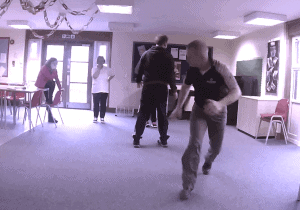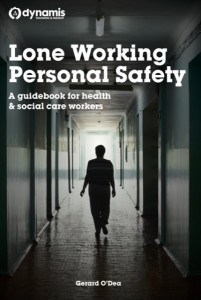Personal Safety Tips for Anyone:
Our clients sometimes ask our Dynamis Team to deliver training on general personal safety for Lone Workers or in our specialised and highly developed future-facing Violence Prevention clinics for Survivors of Abuse.
Here are 12 of our key personal safety tips, taken from and which form part of our Self-Protection Trainer Certification manual.
1: Certain behaviours are correlated with the selection of victims. The victim’s body Language, Posture, Gait, Environmental Interaction, level of Attention and Pace are among the main factors which contribute to the selection matrix. If they are also ‘in the wrong place at the wrong time’ – somewhere isolated, where observation by others is poor – then the appraisal of the victim is likely to be of a ‘good target’.
http://www.psychologytoday.com/articles/200812/marked-mayhem
2: Trust your Intuition. Bad Feelings (cognitive dissonance) you get in interactions with certain people or in potentially threatening environments are often reliable clues to an impending violent incident or confrontation. Your brain will often work out when a trap is being sprung, or a predator is targetting you, or a situation is dangerous to you, long before your cognitive mind has worked out the problem. Act on feelings of discomfort.
http://www.oprah.com/relationships/Trusting-Your-Intuition-Could-Save-Your-Life
3: Many of the worst asocial violence crimes are committed in places that are away from other human beings. Time alone with an attacker, away from other people, is associated with higher levels of violence and lower survival rates for the victim. Make all possible attempts to prevent your being moved from one location to another one.
http://www.womynwarrior.com/2011/06/never-go-to-a-secondary-location/
4: The more ‘professional’ crimes are committed within what the perpetrator has calculated to be a favourable risk/reward/workload appraisal. Effective strategies for preventing these crimes include altering the perpetrator’s appraisal of the factors they have included in their calculation. If you heighten risk, reduce reward and increase workload, you may tilt the balance in your favour.
http://www.nononsenseselfdefense.com/robbers.htm
5: Body Language is an important part of any interaction. It is quite naturally used to communicate what the perpetrator seeks (usually submissiveness) but may also be manipulated by the supposed victim to create opportunities for pro-active counter-assault, when the opportunity presents itself (a “poisoned chalice”). This ‘poisoned chalice’ strategy has its foundation in the strategy of surprise. The bad guy who selects you, doesn’t believe you will fight back (see point 4). If you fight back, you alter the target appraisal matrix.
http://ftp.pwp.att.net/w/a/wabokujujitsu/articles/bodylang.htm
6: You need to know a little about ‘Bad Guy’ psychology. The aggressive person who is going to hurt you in a “social violence” scenario does so because it helps him to estabilish a sense of equilibrium: he believes that he needs to hurt you to support his Status within a group, or to make sure his life is Predictable, or that he has a sense of Control over you and his environment, because he believes you are an Opponent (a ‘Foe’) of some kind or because you have treated him (or represent a situation which has treated him) Unfairly. Your efforts to defuse this situation should focus on these five domains (offering Respect, Certainty, Authority, Rapport and Reciprocity)
www.your-brain-at-work.com/files/NLJ_SCARFUS.pdf
7: Every person has the right to use ‘Reasonable Force’ to protect themselves, if they honestly and reasonably believe it is necessary for them to do so and they have no means of withdrawing from the conflict. Reasonable force, if necessary, also includes the requirement that the force used is proportionate in the circumstances, causing no more harm than the risk of harm presented to the person by the situation.
http://www.amazon.co.uk/Understanding-Reasonable-Force-Mark-Dawes/dp/1846670128
8: The threat of imminent personal harm will cause the body-mind system to kick in to high gear: a sudden release of survival hormones which prepare the body to run or to fight. The most immediate effect of this is an increase in heart rate and numerous sensations in the body and mind: a heightened state of consciousness paired with Olympic-athlete levels of strength and endurance.
http://www.simplypsychology.org/stress-biology.html
“More than anything else in life, it is the potential for intentional, overt, human confrontation that has the greatest ability to modify and influence the behaviour of human beings.” – Lt. Col. Dave Grossman, On Combat
9: Over-arousal can cause negative effects: if a person’s heart-rate escalates without control or awareness in a novel situation, this often results in reduced performance in cognitive tasks and complex motions. Keep it Simple when planning a physical movement or developing a plan. Remember: your body is trying to help you!
http://en.wikipedia.org/wiki/Yerkes–Dodson_law
10: Emotional overload is often accompanied by negative self-talk, attributions or limiting beliefs (I can’t do this! Women can’t defend themselves against men! He’s bigger than me! I don’t want to hurt anyone!). It is easy to become emotionally overloaded in a situation which is unfamiliar (such as being in a physical assault scenario). Negative self-talk will beat you into the ground you long before the Bad Guy will! Try to consider these self-limiting beliefs NOW.
“The whole thing is never to get negative about yourself. Sure, it’s possible that the other guy you’re playing is tough and that he may have beaten you the last time you played, and okay, maybe you haven’t been playing all that well yourself. But the minute you start thinking about these things, you’re dead. I go out to every match convinced that I’m going to win, That’s all there is to it.”
Athlete’s Comments Foundations of Sport and Exercise Psychology Weinberg & Gould
http://psychcentral.com/lib/2010/challenging-negative-self-talk/
11: Throw yourself a survivial anchor. Many people who overcome their attackers do so because in the midst of their confrontation they find a survival anchor and throw it into their near-future. Often it is the thought of seeing their family when they get home. Think about your survival anchor and have it ready!
“I begged him not to do it because I have two children to live for”:
http://www.scotsman.com/news/door-to-door-researcher-fought-sex-attacker-1-743622
12: Research has shown that in many circumstances, fighting back hard and fast, with ferocity and indignation, massively increases your chance of not being victimised. Even in a situation where your actions are not successful, the decision you take to make a stand against the aggressor in defence of yourself will psychologically assist you in the aftermath of an event. In many cases it will facilitate your escape from the situation, especially coupled with the surprise element mentioned in point 5.
“A number of studies find that several active resistance strategies are effective for avoiding rape without increasing risk of physical injury.”
http://www.d.umn.edu/cla/faculty/jhamlin/3925/4925HomeComputer/Rape%20myths/10-Year%20Update.pdf

Gerard O’Dea is a conflict management, personal safety and physical interventions training consultant. He is the training director for Dynamis, a specialist in personal safety and violence reduction initiatives and the European Adviser for ‘Verbal Defense and Influence’, a global programme which addresses the spectrum of human conflict. www.dynamis.training
Gerard’s book on Lone Worker Personal Safety is available on Amazon Kindle and Paperback.



